
Missing garlic and onion on the low FODMAP diet? Keep reading to learn about low FODMAP garlic and onion substitutes that can help you add garlic and onion flavor without the FODMAPs.
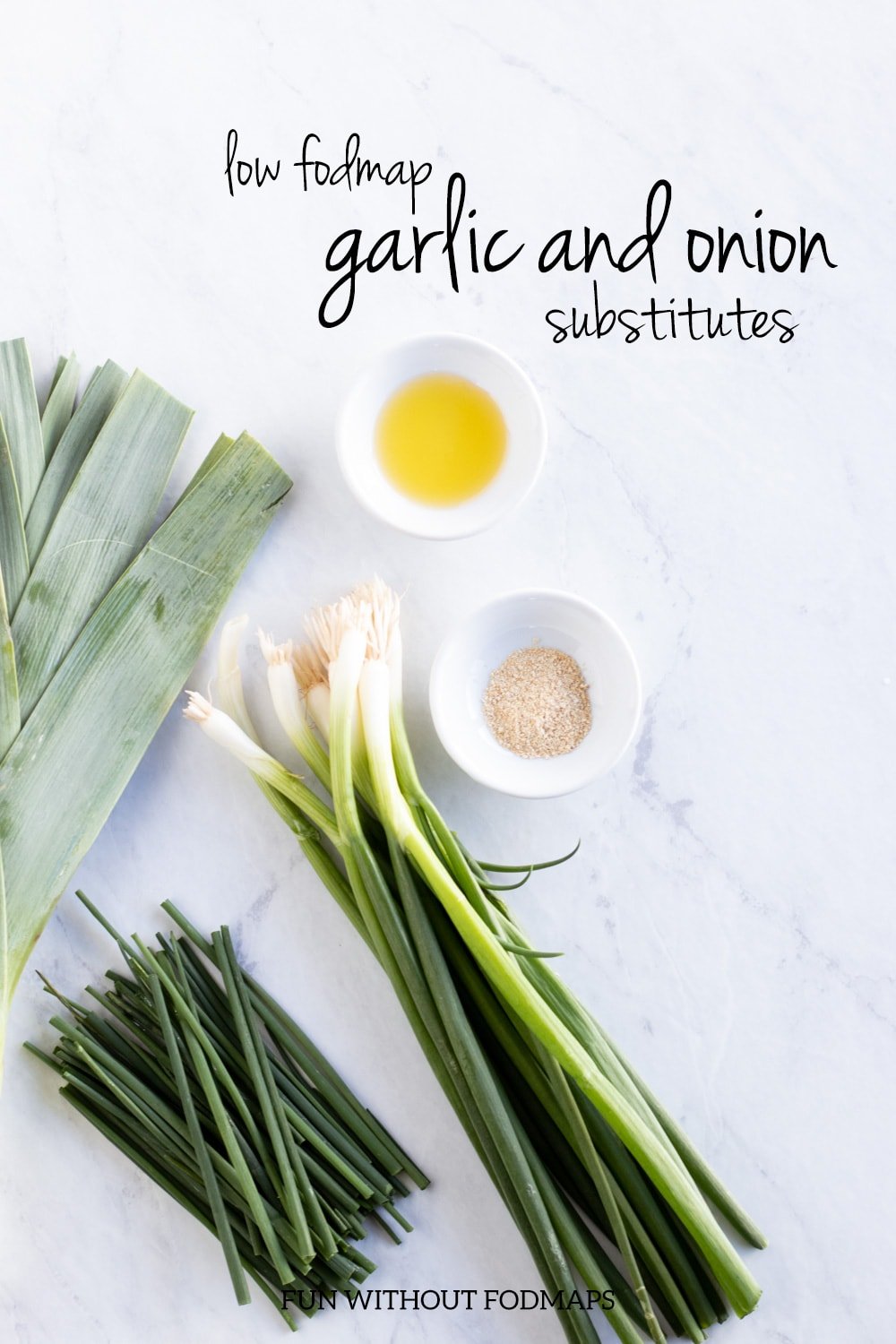
Jump to:
Garlic and Onion FODMAP FAQs
Why can't I eat garlic and onion on the low FODMAP diet?
Garlic and onion are high in the FODMAP, fructan. Fructans are a type of oligosaccharide (i.e., the O in the FODMAP acronym). Like other FODMAPs, fructans are poorly absorbed in the small intestine and rapidly fermented by bacteria in the large intestine leading to symptoms in some people with IBS. During the low FODMAP diet, we temporarily reduce our intake of garlic, onion, and other high FODMAP foods until we can evaluate our tolerance.
I have IBS, do I need to avoid garlic and onion forever?
In short, no. We temporarily avoid garlic and onion during the low FODMAP diet because these foods are high in FODMAPs. In the reintroduction phase, we evaluate our tolerance to garlic, onion, and other high FODMAP foods. Once we have completed the reintroduction phase, garlic and onion can be included back into our diet as tolerated.
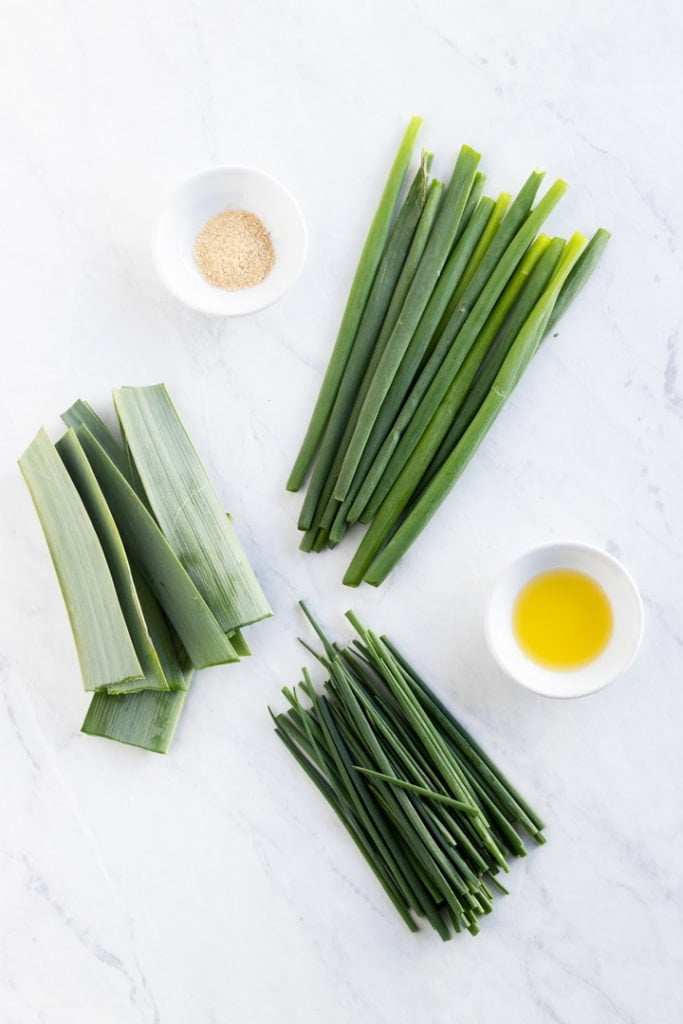
Garlic-Infused Oil (and Other Infused Oils)
Arguably the most common low FODMAP garlic and onion substitute, garlic-infused oil (and other infused oils) are an easy and versatile way to add a hint of FODMAP-friendly garlic (or onion) flavor.
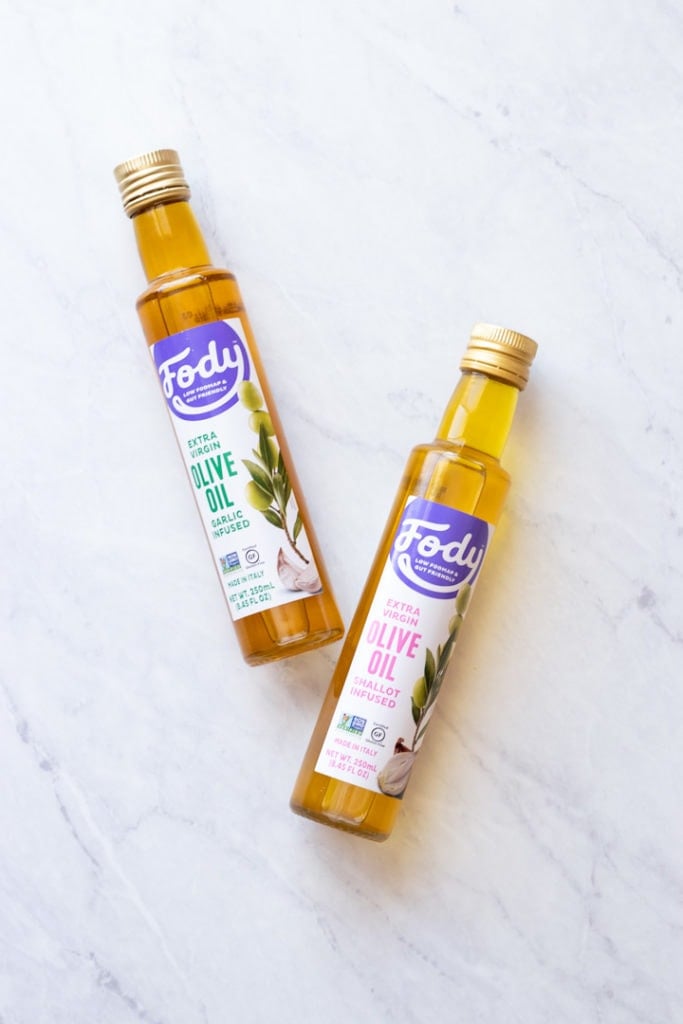
What is garlic-infused oil and is it low FODMAP?
Garlic-infused oil is a product where garlic has been steeped in oil (olive oil, sunflower oil, etc.) to allow for the transfer of non-FODMAP flavor. Garlic-infused oil and other infused oils have been laboratory tested by both Monash University and the FODMAP Friendly Food Program and are low FODMAP.
How is garlic-infused oil low FODMAP, but garlic is not?
To answer this, we need a bit of background science information. FODMAPs are types of carbohydrates. These carbohydrates are water-soluble, but not oil-soluble. This fact means that FODMAPs will dissolve in water (and other water-based liquids like broth), but not in oil.
When making garlic-infused oil, garlic cloves steep in oil over time. This process allows for the transfer of non-FODMAP flavors to move into the oil. The FODMAPs, because they are not oil-soluble, do not dissolve and instead, stay locked up within the garlic cloves.
If the garlic cloves are completely removed and discarded from the oil before eating or adding any other water-containing food or liquid, the oil should not contain FODMAPs. This principle also applies to other infused oils like shallot-infused or onion-infused oil.
Are all garlic-infused oils low FODMAP?
There is a little debate as to whether all garlic-infused oils are suitable for the low FODMAP diet. Some commercially-made infused oils do not follow the same infusion procedure as described above. Laboratory testing of FODMAP levels is the only surefire way to know if something is low FODMAP. So, if you have any concern, please choose a certified low FODMAP product.
With that said, my nutrition philosophy as a FODMAP-trained registered dietitian is to avoid overly restricting foods (and adding undue stress) unless necessary. There will always be exceptions, but in my practice, I generally invite my clients to start with what they can find first. If symptoms persist, we will reassess and maybe consider a certified low FODMAP product.
Is garlic-infused oil safe?
There is a small, but severe risk of botulism poisoning from incorrectly stored, homemade infused oils. Commercially-prepared garlic-infused oils are safe to consume. The Food and Drug Administration (FDA) requires manufacturers of commercially infused oil to follow strict food safety procedures and acidify their products to prevent botulism and other serious foodborne illnesses.
Please use caution when making and storing homemade infused oils. Due to the ideal environment created for Clostridium botulinum growth, it is unsafe to store homemade garlic-infused oil at room temperature unless it has been acidified using this procedure. Please note, many recipes online do not include this acidification step.
To use and safely store homemade garlic-infused oils:
- Use immediately after preparing
- Refrigerate for use within 2 to 3 days (and discard any remaining oil after this time)
- Freeze for longer use
Where can I find garlic-infused oil?
Commercially-made garlic-infused oils can be purchased online, as well as in a growing number of US grocery stores. Some favorites include:
- Colavita Roasted Garlic Olive Oil (certified low FODMAP)
- Fody Foods Garlic-Infused Olive Oil (certified low FODMAP)
- Fody Foods Shallot-Infused Olive Oil (certified low FODMAP)
- Garlic Gold Garlic-Infused Olive Oil
- La Tourangelle Garlic-Infused Sunflower Oil
How do I use garlic-infused oil?
Use garlic-infused oil in many regular recipes calling for garlic. It will not be an exact replacement or direct substitution, but garlic-infused oil can be a great way to add garlicky flavor to low FODMAP dishes. It can be used during the cooking process or drizzled on after cooking for a hint of garlic flavor.
How I use it in low FODMAP recipes: Many recipes calling for garlic will also use some type of oil or cooking fat. To make a recipe more FODMAP-friendly, I omit the garlic (and onion) entirely from the ingredients. Then, I will try a one-to-one substitution of garlic-infused oil for the amount of oil or cooking fat called for in the recipe. As the flavor and intensity of infused oil can vary, and there is an infinite number of recipes out there, this method will not always work. However, I have found it to be a good general starting point.
Some recipes using garlic-infused oil:
- Low FODMAP Chicken Cacciatore
- Low FODMAP Moroccan Chicken
- Low FODMAP Pesto
- Low FODMAP "Garlic" Mushroom Pasta
Green Onion Tops
Green onions or scallions are related to onions and can be a FODMAP-friendly way to add a hint onion flavor to dishes ... if you know which part to use!
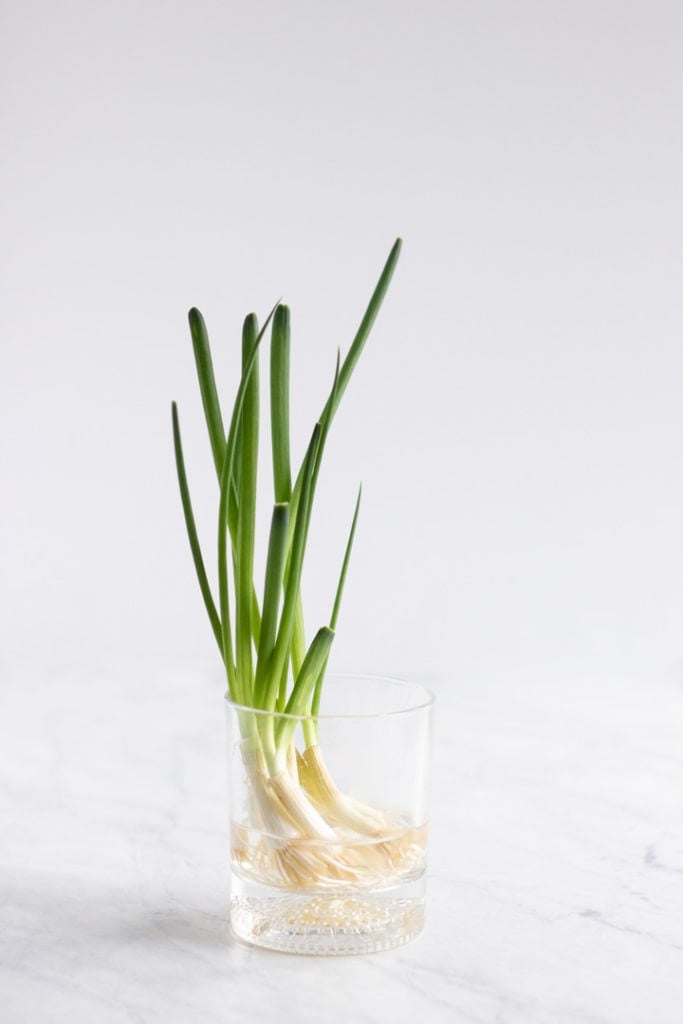
Are green onions or scallions low FODMAP?
Monash University has tested green onions, and green onions can be low FODMAP depending on the part of the onion used. The green tops of scallions or green onions are low in FODMAPs meaning that you can use them to add oniony flavor on the low FODMAP diet. The white part or bulb of the green onion is high in FODMAPs and avoided during the low FODMAP diet.
How do I use green onion tops?
When ready to use, slice off the white bulb at the point where the dark green tops start to fade into the white bulb. Discard the white bulb, gift it to someone who isn't low FODMAPing, or use it to regrow green onion tops (see "How to re-grow green onions" section for more information).
Rinse the green onion tops under running water. Pat dry. Slice or chop and add as a fresh and flavorful garnish to all kinds of savory dishes.
Where do I find green onions and how do I select them?
Find green onions in the produce section of most grocery stores. During the summer months, you may also find them at farmer's markets, or try your hand at growing them if you enjoy gardening.
Choose green onions with bright green, fresh-looking tops. Avoid any that are wilted or dried out.
How to store green onion tops?
To store, roll unwashed green onion tops in dry paper towels. Place the wrapped green onion tops in a sealable plastic bag or glass pyrex container and seal. Refrigerate, replacing the paper towel as needed.
How to re-grow green onions?
Easily re-grow green onions for a (near) endless supply of FODMAP-friendly flavor.
- Separate the green onion tops from the white bulbs with the roots by cutting at the point where the dark green tops start to fade. Use the green onion tops for low FODMAP cooking. Save the white bulbs with the roots.
- Fill a small glass container with 1-2 inches of clean water. Place the bulbs, root-side down, into the water. Transfer the glass container to an area with daylight.
- Replace the water every 2-3 days (when it starts to get cloudy) and watch your onions re-grow. It often takes about two weeks to re-grow to their original size.
Chives
Relatives of onions and garlic, chives are often used as a fresh garnish and can add a hint of FODMAP-friendly garlic flavor to many dishes.
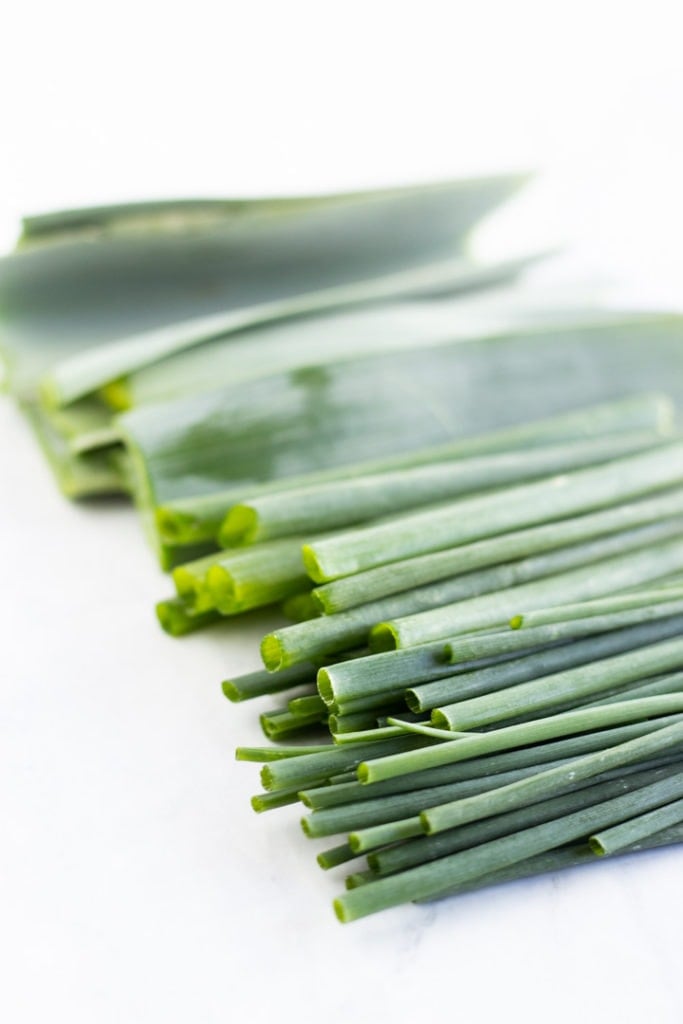
Are chives low FODMAP?
Yes, chives are low FODMAP. Both, chives and Asian chives, have been laboratory-tested by Monash University
How do I use chives?
Chives are best used fresh, often as a garnish, rather than cooked into dishes. They have a subtle onion-garlic flavor. Finely mince chives and use them to garnish eggs, potatoes, soups, mayonnaise-based dressings, and more.
Where do I find chives?
Find fresh chives in the produce section of most grocery stores. You will often find them near other pre-packaged fresh herbs. Chives are also relatively easy to grow in a garden or patio containers.
How to store chives?
To store, roll unwashed chives in a dry paper towel. Place the wrapped chives in a plastic bag or glass container and seal. Refrigerate for up to one week, replacing the paper towel as needed.
Leek Leaves
Leeks look like giant green onions, and their leaves can be a great way to add FODMAP-friendly onion flavor to many cooked recipes.
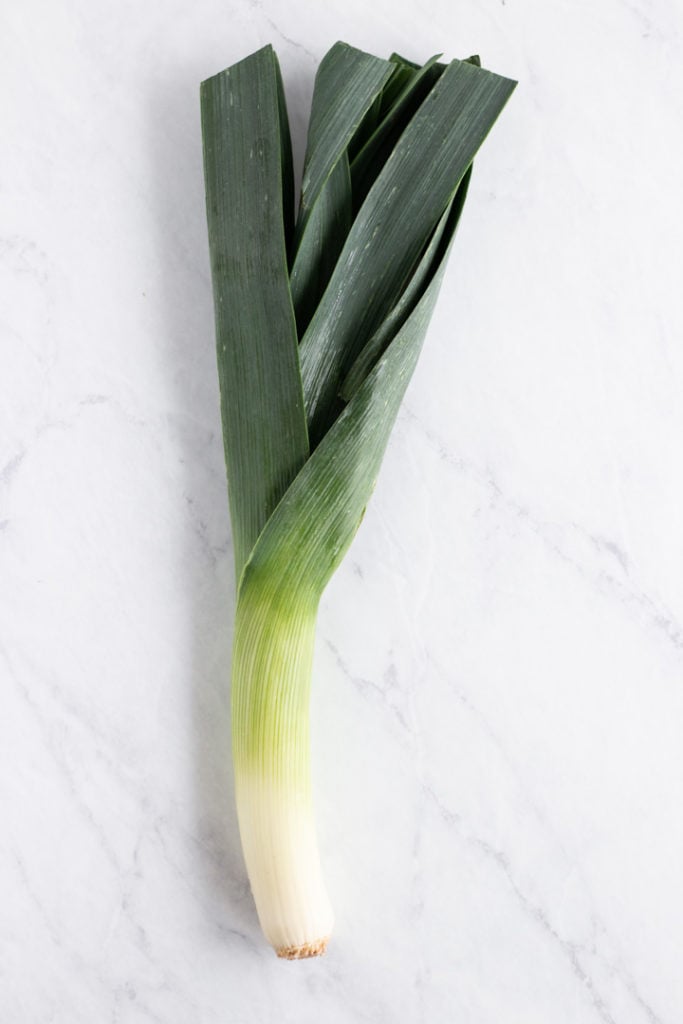
Are leeks low FODMAP?
Monash University has tested leeks, and they are low FODMAP depending on the part of the leek used. The leek leaves, or dark green top parts of the leek, are low FODMAP in up to a ⅔ cup serving. The bulb, or lower white part, is high in FODMAPs and avoided during the low FODMAP diet.
Where can I find leeks and how do I select them?
Many larger grocery stores carry leeks in their produce department. I had really good luck finding affordable leeks at my local Walmart.
When selecting leeks, choose those with firm, crisp stalks. For low FODMAP purposes, select leeks with larger portions of green leaves. Avoid any with withering or browning leaves.
How do I prepare leek leaves?
When ready to use, slice off the white bulb at the point where the dark green leaves start to fade. Discard the white bulb, gift to someone who isn't low FODMAPing, or use it to regrow leek leaves.
You will often find a sandy grit in between the leek leaves. This grit should be washed away before using. To do this, separate the leek leaves and wash them thoroughly under running water. Dry the leaves and then thinly slice or chop for use in recipes.
How do I use leek leaves?
Raw leek leaves tend to be tough, and although they are edible, the leaves are not usually eaten raw. Instead, I recommend trying them in recipes where they will be cooked to soften. Leek leaves can be sautéed in oil until bright green, fragrant, and soft and used much like sautéed onion or garlic. Alternatively, they can be added to slow cooking dishes like soups or stews.
Asafoetida Powder (or Hing)
Asafoetida powder, also known as hing, is a dried resin that has been used for centuries in India for cooking and traditional medicine. When used in cooking, asafoetida adds a subtle onion and garlic flavor without FODMAPs.
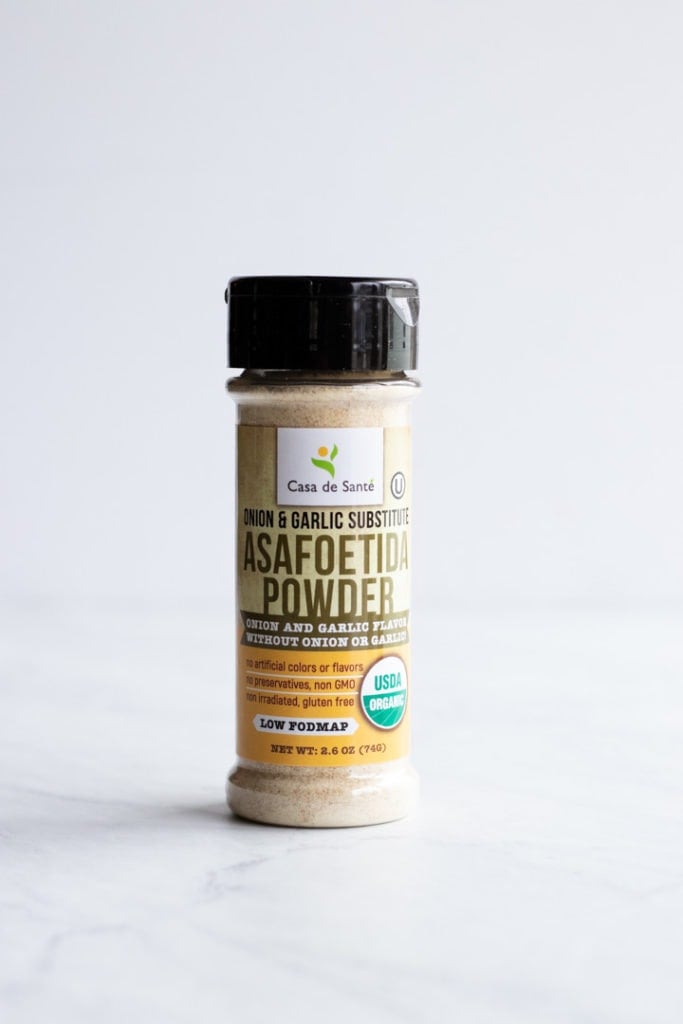
Is asafoetida low FODMAP?
Yes, asafoetida powder is low FODMAP. It has been laboratory-tested by Monash University.
Is asafoetida safe to eat?
For the majority of people, asafoetida is safe to eat. However, asafoetida has been shown to have some pregnancy-preventive properties. Avoid asafoetida if you are pregnant or trying to get pregnant.
Asafoetida is naturally gluten-free; however, some products contain wheat flour and are not suitable for those requiring a gluten-free diet.
How do I use asafoetida?
Start with a small amount and sauté it! Raw asafoetida powder has a pungent odor and flavor, especially if you're not used to it. The smell and taste of asafoetida mellow when sautéed in a cooking fat like butter, ghee, or coconut oil. So, I always recommend sauteeing it!
To use asafoetida, start with a tiny pinch and add it to 1-2 tablespoons of hot oil. Sauté for 1-2 minutes or until the asafoetida odor starts to mellow. Use this oil immediately to continue cooking veggies or protein foods, or add it to curries, soups, and more.
How do I store asafoetida?
Store asafoetida in an airtight container to not only maintain freshness but also prevent everything else from smelling like asafoetida. 🙂
Where to find asafoetida?
Many US grocery stores do not commonly carry asafoetida. However, you may find it in some Asian markets. You can also purchase asafoetida online through Amazon or Casa de Sante.
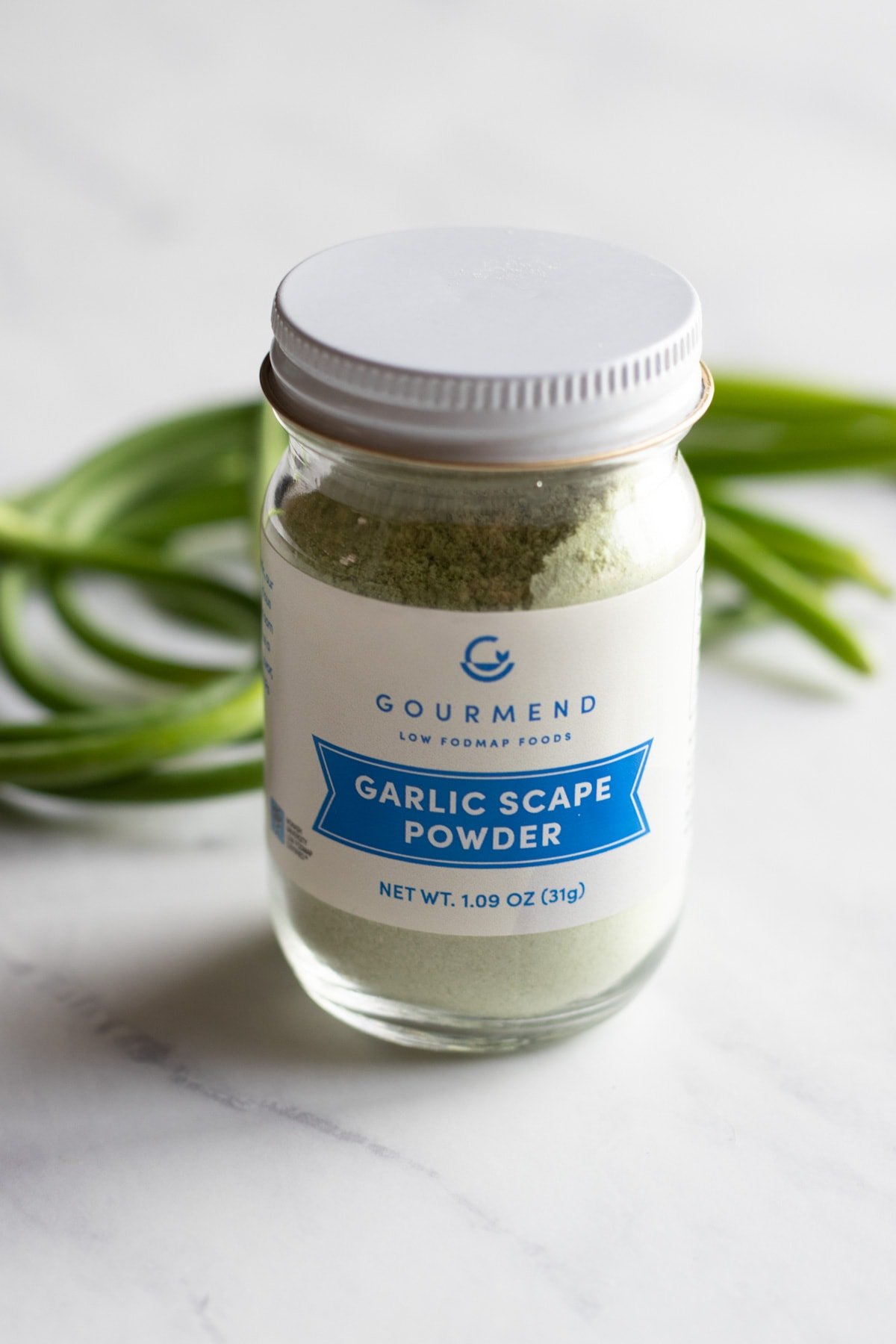
Garlic Scape Powder
Is garlic scape powder low FODMAP?
Yes, Gourmend Low FODMAP Foods' Garlic Scape Powder was recently tested and certified low FODMAP by Monash University. A low FODMAP serving is up to ¼ teaspoon or 0.3 grams. Larger servings do contain high amounts of fructans, so be mindful of serving size until FODMAP tolerance is known.
Are fresh garlic scapes low FODMAP?
Fresh garlic scapes have not yet been tested for FODMAP content. For untested foods, it is recommended to test-to-tolerance small amounts when your symptoms are well-managed.
What does garlic scape powder taste like?
The garlic scape powder from Gourmend has a more subtle garlic flavor than fresh garlic scapes or bulbs, but it is still a great way to add low FODMAP garlic flavor to cooked dishes.
How do I use garlic scape powder?
Due to the raw nature of the garlic scape powder, it is recommended to cook into dishes before enjoying it. I add it like I would garlic powder into cooked recipes.
Where can I buy garlic scape powder?
Currently, Gourmend Garlic Scape Powder is only available in the United States from their website.
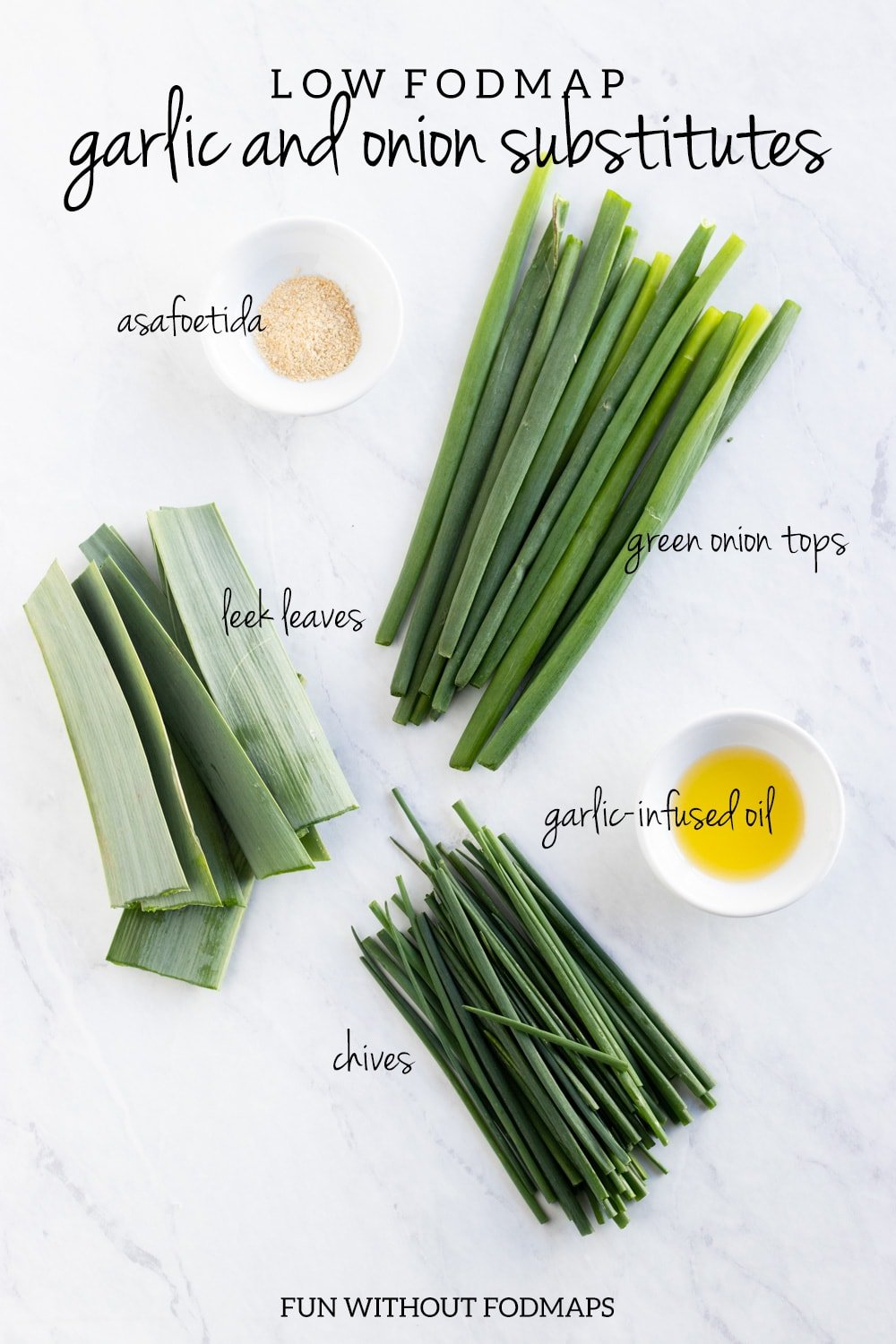

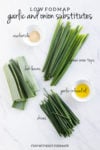

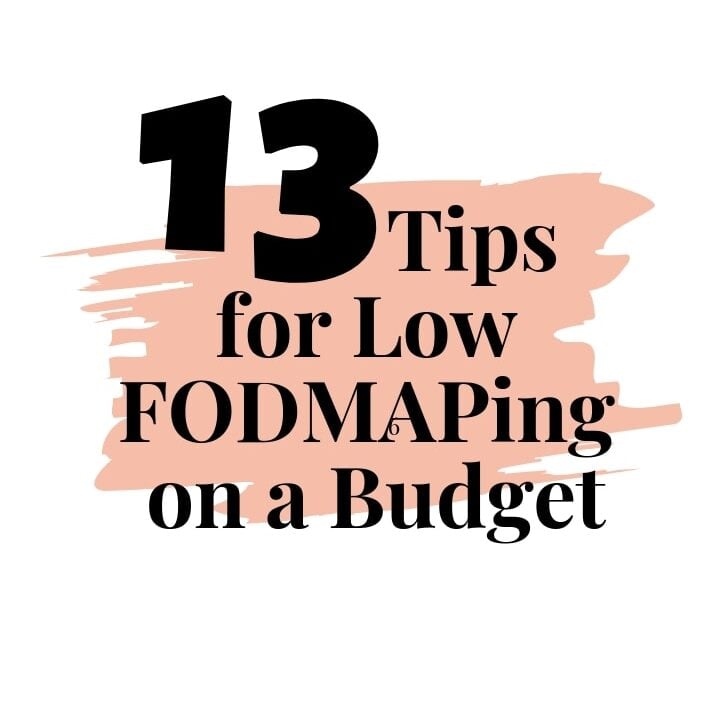
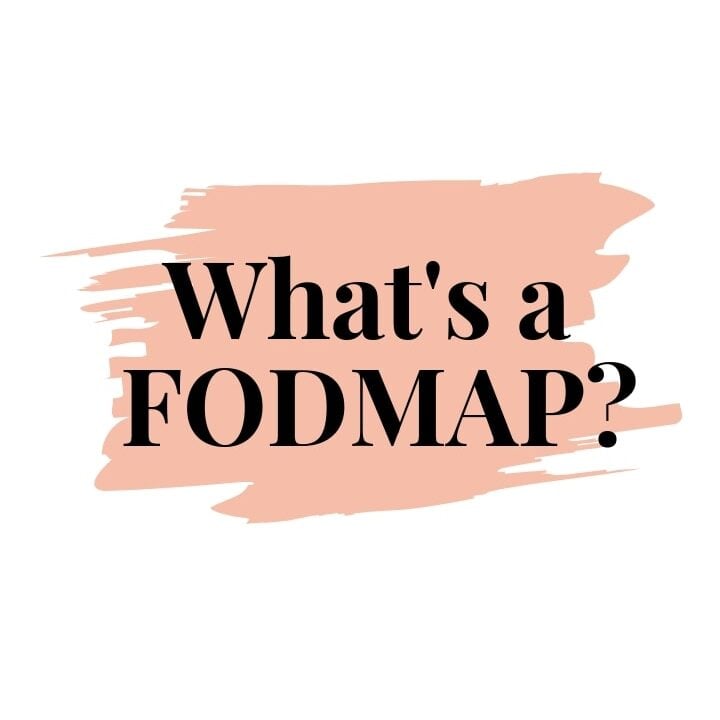
June says
I just read an article about a food called "ramps"". It is purported to have an onion and garlic flavor mix. Couldn't find any information on whether it is low fodmap. Are you familiar with ramps? Your information shared in this article is great!
Em Schwartz, MS, RDN says
Hi June, Ramps have not been laboratory-tested for FODMAPs. So, I cannot say if they are low FODMAP or not. For untested foods, it's recommended to try a small amount of the untested food when IBS symptoms are under-control and monitor for symptoms. Best, -Em
Natasha says
I have tried them they cause significant bloating and distress for me.. almost like eating like a combination of onion and garlic together
Ann winning says
If using asafoetida do I use olive oil or vegetable oil to saute please
Em Schwartz, MS, RDN says
Hi Ann, you can use either from a FODMAP standpoint. However, when sauteing, it's generally recommended to use an oil with a higher smoke point. My go-to is avocado, but vegetable or canola are other options with higher smoke points. Best, Em
Maureen says
I recently dehydrated the greens from six leeks--after rinsing, I cut them into 1 inch pieces, dried them until crisp and grind them as I need them. Tons of great flavor and no FODMAPS!
Kelly says
Hi, great site, thank you. Bon-Appetit says ghee has no water in it, it is boiled off when it is clarified. So would/should the trick of suateeing garlic a few minutes and then removing it work for ghee as it would for olive (other) oils? Thanks!!
Em Schwartz, MS, RDN says
Whoops! Sorry, I responded to your initial comment but didn't see your second comment until after. You are correct - ghee should work similarly to an oil. Best, -Em
Bill Carless says
Can I use wild garlic
Em Schwartz, MS, RDN says
Hi Bill, I have not seen any data on the FODMAP levels of wild garlic. For untested foods, it's suggested to test-to-tolerance when symptoms are well controlled. Best, -Em
Polly Hughes says
I have been told that Elephant Garlic and red onions are the best and healthiest varieties of these foods. Has any testing been done to compare the fructans of these varieties to those of regular garlic and white or yellow onions?
Omri Suleiman says
Thank you for this brilliant article, I have been missing the taste of garlic.
A question : they sell a thing here in Spain called Ajo Tendre . It's like the spring onion equivalent of garlic. They have green tops. Do you know if the green tops of these are also low fodmap ?
Allison Warner says
Would like to know how to make the infused oils- how much onion and garlic and can onion be cut into pieces and can garlic?
Em Schwartz, MS, RDN says
Hi Allison, the amount of onion and garlic used will depend on the amount of infused oil you are looking to make, as well as your flavor preferences. The general process is gently warming the oil and garlic/onion pieces together in a saucepan or skillet for about 10 minutes. The onion and garlic can be cut into pieces but I would suggest keeping the pieces large enough to easily remove them from the oil. As long as all of the onion/garlic pieces are removed from the oil before any other ingredients are added, there should be no transfer of FODMAPs. Due to food safety concerns, I recommend using the homemade infused oil right after preparing or cooling and freezing for later use. -Em
B2 says
I found the Asafoetida powder from TheKitchenImp on Etsy is terrific! Thanks for the great info.
Em Schwartz, MS, RDN says
Thanks for the tip, B2!
Helle says
Just tested these new low FODMAP onion/garlic powders: Excellent 🙂
https://fodmapfriendly.com/blogpost/freefod-certify-worlds-first-low-fodmap-garlic-onion-replacer-fodmap-friendly/
Best regards - Helle
Em Schwartz, MS, RDN says
Thanks for sharing, Helle! I have heard good things, but haven't had a chance to try FreeFod yet. 🙂
Fran says
I make up the infused oil using a bottle (750 mls) of oil, a couple of onions, and a head of garlic. WHne it has cooled I freeze it in icecube trays, and store them in a zip-lock bag in the freezer. One or two blocks are convenient for most recipes that start with frying.
I keep reading that low FODMAP diet is just temporary, but I have found I can re-introduce almost none of the fodmaps foods without unacceptable symptoms. On the bright side, I'm now an expert in cooking for this diet.
Em Schwartz, MS, RDN says
Thank you for sharing, Fran! I'm sorry to hear you aren't able to tolerate more FODMAPs at the this time. Intolerances may change over time and FODMAPs (in tolerated amounts) can support gut health. So, I invite you to consider giving the reintroduction process another go every ~3-6 months. 🙂
Scott says
Have you ever had a fructose malabsorption test, it could be the problem.
cheers Scot.
Marjie says
Instead of oil, could I melt butter and infuse the melted butter with garlic and onion safetly for low FODMAP purposes? Thank you?
Em Schwartz, MS, RDN says
Great question, Marjie! It depends. Butter contains about 15% water, so some of the water-soluble FODMAPs from the onion or garlic can dissolve into the butter as it infuses. Tolerance levels vary greatly between individuals, so you may find you tolerate this amount. However, we generally recommend sticking to infused-oils for the first phase.
kelly says
Thank you! I have been looking everywhere for an answer to this! I tried to find whether ghee contains water, I have not found that yet - would you expect ghee to work the sae or better than butter?
Em Schwartz, MS, RDN says
Hi Kelly, I apologize for the delay. It is my understanding that ghee has little to no water content due to the clarification process it undergoes. So, yes, ghee should be a better option than butter when it comes to not transferring FODMAPs when garlic/onion are sauteed (then removed before other ingredients are added). Best, -Em
Emily says
There is a recipe for home-made ranch that I would like to make friendly for low FODMAP. It calls for onion powder and garlic powder. Could asofoetida powder be used in place of those? It would be mixed it with an immersion blender. Or would it be better to use garlic infused oil? The recipe specifically calls for extra light tasting olive oil.
Em Schwartz, MS, RDN says
Hi Emily! I would recommend using garlic-infused oil or maybe trying a mix of extra light tasting and garlic-infused. In general, asafoetida is best used in cooked dishes after sauteing it in a cooking fat. Hope that helps!
D Graham says
I tried adding chives and green onion tips in my diet after identifying onions and garlic as FODMAPS I can't tolerate. However, I found chives and green onions also caused GI distress. After further research, I concluded I'm intolerant of all alliums (but thankfully not allergic). So even though they may be low in FODMAPs, chives and green onions can still be a source of IBS distress -- slowly test your tolerance.
Emily says
Hi D Graham, I'm sorry to hear you don't tolerate alliums. Research shows following a low FODMAP diet can help the majority of people with IBS, which is why I choose to focus my information on that area of IBS management. However, no single dietary approach is perfect. Every person is unique and there are some non-FODMAP-related foods and food components that may not be tolerated by some people with IBS.
Rick says
Thank you for posting this! I also had problems with chives, and I was surprised it was low-fodmap! Now I have something to look into!
Wendy says
Thank you for this article! We recently bought some asofoetida on My Spice Sage to try as a garlic substitute and the smell almost knocked me down. I remembered seeing your blog post and came back here to see if the smell is normal or if we got a bad batch, but it sounds like that is normal. We will try it tonight!! Thanks so much for this blog; my partner eats low fodmap and I am constantly trying to find new and tasty recipes for us to cook that won't make him sick and everything on your blog is delicious, easy to prepare, and most importantly safe.
Emily says
Haha. Yes, asafoetida definitely has a unique smell if you're not used to it. 🙂 And, thank you! I'm thrilled to hear you and your partner have found some of my recipes and resources helpful. I appreciate you!